How to Build Telemedicine Software: Ultimate Overview
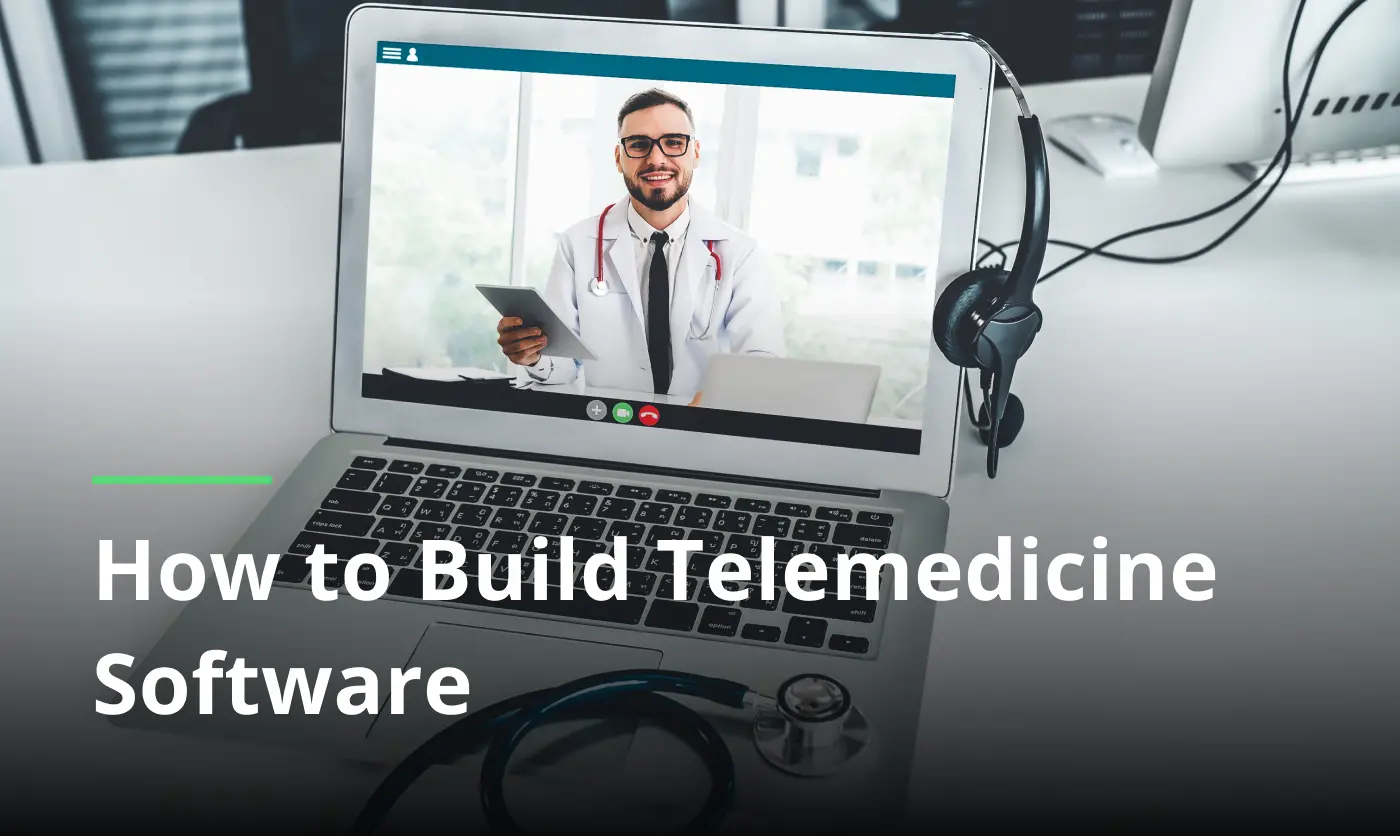
Telehealth software development has become quite popular nowadays because of the global digital revolution of the past decade. Since everything is computerized and you can easily work, order goods and even buy groceries from home, it becomes a nice spot for virtual healthcare to come on stage — you get the same services as in a hospital, saving time on commuting. Our overview will show you all the necessities regarding this industry, particularly the tech part.
Being a very tricky process in terms of data security and regulatory compliance, telemedicine software development has a lot more to offer in terms of complexity. We will divide it into separate parts and show you all the most common practices and approaches.
Our company provides top-notch telehealth services connected with this realm so we are looking forward to cooperating with you, focused all together on your solution and its creation. On this positive note, let us begin with our review that will become a very useful manual for you!
What is telemedicine software?
With online medical services in place, modern healthcare is being transformed. It is a digital bridge connecting patients and doctors for remote consultations. This system has several useful features, including video conferencing, secure messaging, EHR integration, appointment scheduling and prescription management. It puts the traditional hospital practically at your fingertips.
Custom telehealth software development of such platforms reduces unnecessary in-person visits, saving time and effort by allowing practitioners to diagnose, treat and monitor from afar. This allows booking urgent and timely activities for primary care, mental health support, chronic disease management and emergencies, further verifying that an ounce of prevention is worth a pound of cure.
These types of solutions provided by healthcare software development companies used in telemedicine are changing the game by taking down geographical barriers and bypassing all red tape so that de facto medical services are made available to people in remote or underserved areas.
Portals that are products of telehealth software development contribute by cutting down waiting times and automating boring admin jobs so that the medical professional can work smarter rather than harder toward what matters most: the patient.
This revolution is steadily gaining steam, some modern platforms shield their practice with an airtight mechanism of end-to-end encryption and HIPAA compliance to keep information protected at any cost.
How to build custom telehealth software?
Now, it’s time to come to one of the most important parts of our review: here, we will highlight the main steps in creating a telemedicine platform. With this, we try to lead you through planning and compliance to actual engineering and then deployment in bringing a guarded, effective and easy-to-use e-health portal.
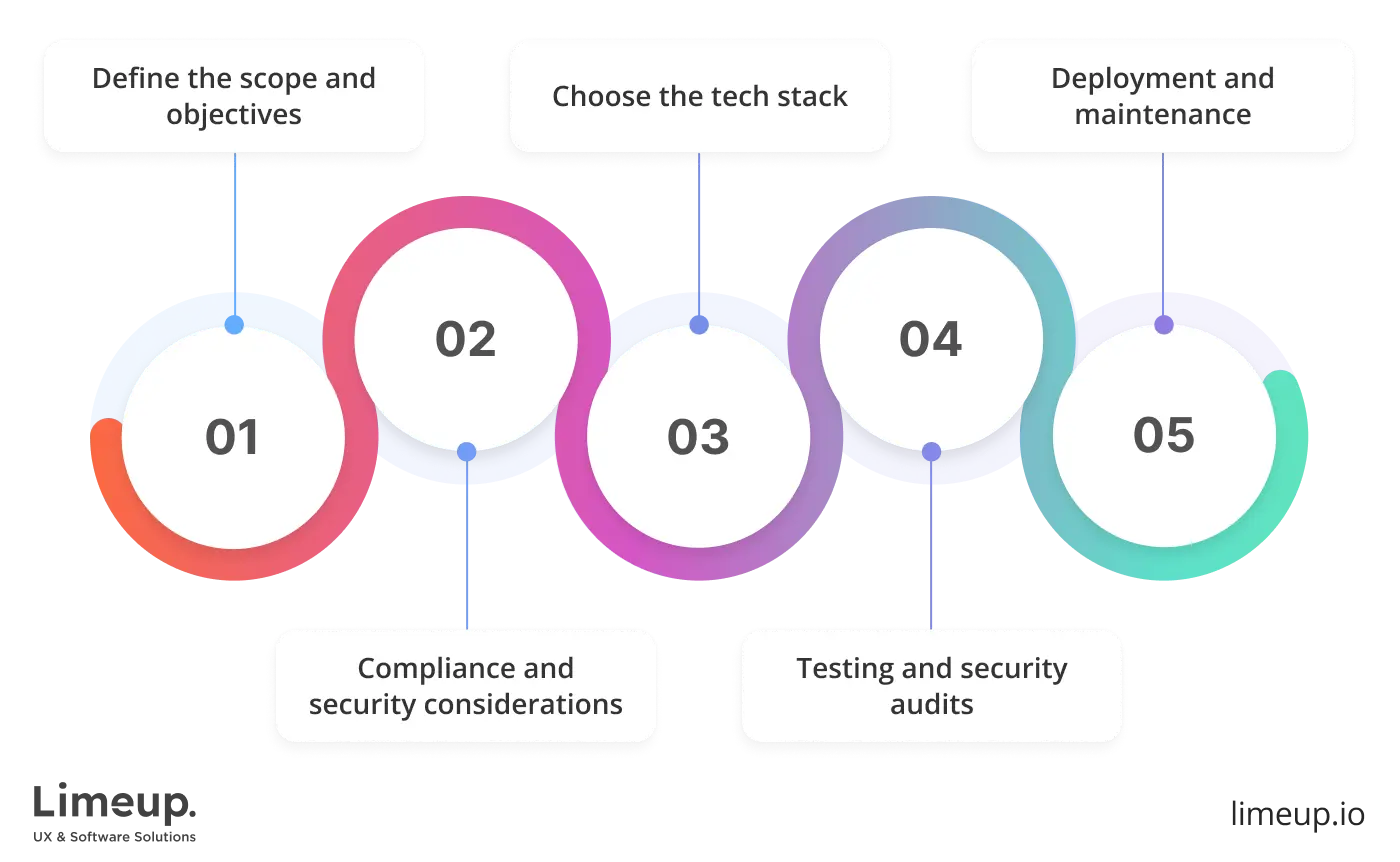
Step 1. Define the scope and objectives
Before the beginning of online telemedicine software development, the roadmap must be drawn, target users must be established, necessary features must be listed and result expectations must be set. By firmly establishing goals in the early design phase, organizations can keep their eyes on the prize and ensure that the system meets both strategic goals and user expectations.
Step 2. Compliance and security considerations
Remote patient access services must comply with rules and rigorous regulatory requirements, such as HIPAA in the U.S. and GDPR in Europe, thus locking away personal data. Healthcare providers who use end-to-end encryption, secure authentication and role-based access control will be ahead of the curve in reducing risks and ensuring that sensitive information does not fall into the wrong hands. After all, better safe than sorry in data protection!
Step 3. Choose the tech stack
Finding the perfect technology stack is like using the correct plan for a skyscraper: make sure the telehealth app is scalable, protected and performs charmingly. For the front-end, find partners that use React or Vue.js for such sleek user interface designs, in association with HTML5 and CSS3 to ensure smooth performance across all types of devices irrespective of screen sizes.
For custom telemedicine software development, Node.js and Django are among the most powerful options to handle server-side logic with speed and scalability, proudly provided with technologies like Express.js (for Node.js) or Python for Django. WebRTC is essential for easy real-time video communications, GraphQL or REST APIs might be employed for nice data fetching and connecting between the front- and back-end.
Step 4. Testing and security audits
Stringent examination is the groundwork for a perfect product, verifying functional, usability and performance perspectives to ensure that everything is running smoothly on various devices and operating systems.
Every part must be adjusted well to a level of performance so that it is an entirely well-oiled machine. Regularly programmed for safety, vulnerability assessment and penetration testing guarantees safety nets by checking software weak points.
Step 5. Deployment and maintenance
Crafting a well-thought-out deployment strategy is like preparing a plan that guides you in the smooth transition of your telehealth platform from the idea to a live environment. This frequently takes several successive rollouts, making sure that everything is in top condition while at the same time demonstrating just so you can look for early performance downfalls.
Just as a car requires regular maintenance, frequent updates, security patches and further feature implementations, telemedicine software developers are needed to give it a good running headway and an edge over the competition. Then, this place would be in a constant peak state to serve, compete and meet the requirements of what is going on in the industry.
An important point is to hire software developers of this kind to fulfil every consideration stated above in this subsection. They can contribute a lot to your success, so never overlook the support of such professionals if you want every part of your project to be aesthetically pleasing and highly functional.
What are the features of software development for telemedicine?
In the process here now, we shall open all the crucial characteristics of the programming process, explain the meaning of these attributes and how they contribute toward improving the quality of the end product.
In the process of telemedicine software development, from designing up to release, everything is delivered with a meticulous eye to an end result that makes it happen to experience the user’s seamless interaction and a built-in, strong, scalable support through the test of time.
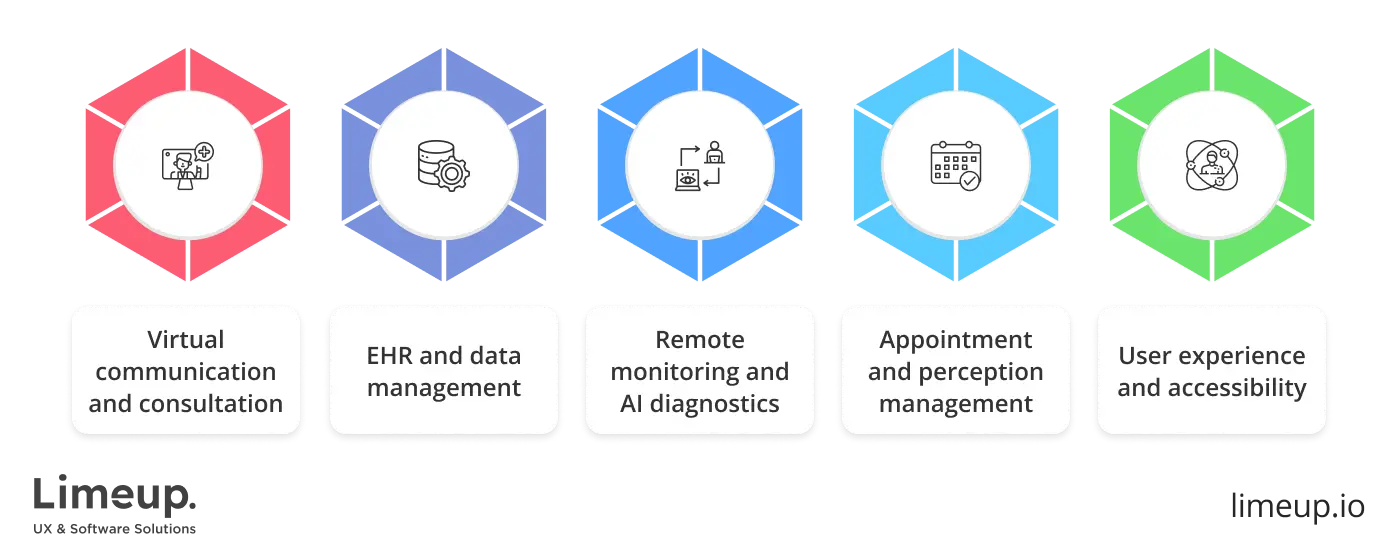
- Virtual communication and consultation
Safety video conferencing, real-time messaging, bots simulating human conversation — these technologies are the basic framework of the successful interaction between physicians and consumers, which ensures the smoothness of the performance of a good orchestra.
These compound services provide a strong basis for the best treatment possible while managing a patient’s clinical record, which translates to managing health care effectively, regardless of the distance.
- EHR and data management
Seamlessly integrating electronic records and cloud storage, making sure that communications are well streamlined within healthcare. Offering ensured availability of history of illnesses, test results and plans for the medication thereof calls for ensuring that any essential information is not allowed to slip through the cracks.
With all persons in one place, doctors stand to meet on the same levels of provision that continuity of care is reached within multiple facilities, acting as a single well-orchestrated team to guarantee that sick people receive appropriate treatment in time.
- Remote monitoring and AI diagnostics
The field of custom telemedicine software development has evolved with the coming of device connectivity, which happens during palpation and computing aided symptom diagnosis while the vitals are taken in real time. This eliminates the necessity of medical attendees waiting for passive monitoring to sound an alarm, as it is instead transformed into a more active monitoring.
It is the new rundown of advanced preventive technology that manages to maintain your status ahead of the medical issues instead of reacting to them after they have already wreaked havoc.
- Appointment and perception management
Enough automation and digital integration of bits and pieces, prescriptions and pharmacy already make health services easy and smooth from start to end. By doing away with absences and increasing adherence to medication on one side and the workflow at work on the other, the collection of utilities is taking much of the guesswork out of appointments and drug refills.
With everything tightly synced in telemedicine software development, users and care providers are free to get on with what is truly important. The kind of high-quality approach that decreases roadblocks is undoubtedly important for patients’ convenience.
- User experience and accessibility
The seamless UX is created with great intuitive portals fit for the doctor and client, plus, what is more, it has multilingual capabilities and cross-platform support. With this user-friendly interface, one’s insurance condition may not be a concern as a promise toward breaking down barriers to healthcare and making it stronger securely guarantees that no one is left behind in the cold.
In addition to that, people with any kind of disability will easily be able to roam around or access the services without having to get lost in the complex maze. By distinguishing patients from one another, it makes the best user interface and design available.
If you plan to enhance your platform with some other interesting features, we recommend you hire dedicated developers. This is a cost-effective investment due to their expertise and array of specialized services. Coupled with their skills in the domain, they can help you with fresh ideas while ensuring that the telemedicine portal works perfectly and has all the desired features.
How long does telehealth software development take?
Building such a system is like constructing an ultra-modern, high-tech “portal” between patients and medical professionals, requiring thorough planning, careful designing, strong engineering and exhaustive testing at each stage of the process. The timeline is contingent on the complexity of projects, regulatory requirements and integration with pre-existing features.
The table here estimates the duration for various phases of telemed program creation according to the platform scale and gives a complete roadmap from its inception to launch.
| Development phase | Small solution (3-6 months) | Medium size system (6-12 months) | Enterprise scale project (12-24 months) |
| Planning & research | 2-4 weeks | 4-6 weeks | 6-10 weeks |
| UI/UX design | 4-6 weeks | 6-8 weeks | 8-12 weeks |
| Core development | 8-12 weeks | 16-24 weeks | 24-48 weeks |
| Third-party integration | 2-4 weeks | 6-8 weeks | 8-16 weeks |
| Testing & QA | 4-6 weeks | 8-12 weeks | 12-24 weeks |
| Regulatory adherence | 2-4 weeks | 6-8 weeks | 12-20 weeks |
To summarize everything stated above, as far as timelines for development are concerned, they’re as much a moving target as anything else. Simple solutions can take as little as a couple of months to put in place and be operational to deliver mostly standard features.
However, enterprise-level systems for the latest technologies, such as artificial intelligence diagnostics and remote monitoring with multi-platform capabilities, stretch the creation time while ensuring that every piece fits perfectly in place within this puzzle.
How much do telemedicine software development services cost?
Such solutions are increasing in demand and hence, this industry is booming. All the funds you need to invest are up to the policy of the service provider you are working with, so in this case, prices can vary significantly. But, at the same time, the telehealth market is establishing very quickly, judging by the CAGR of 24.3% from 2024 to 2030, so a lower threshold for entry in financial terms may remain high.
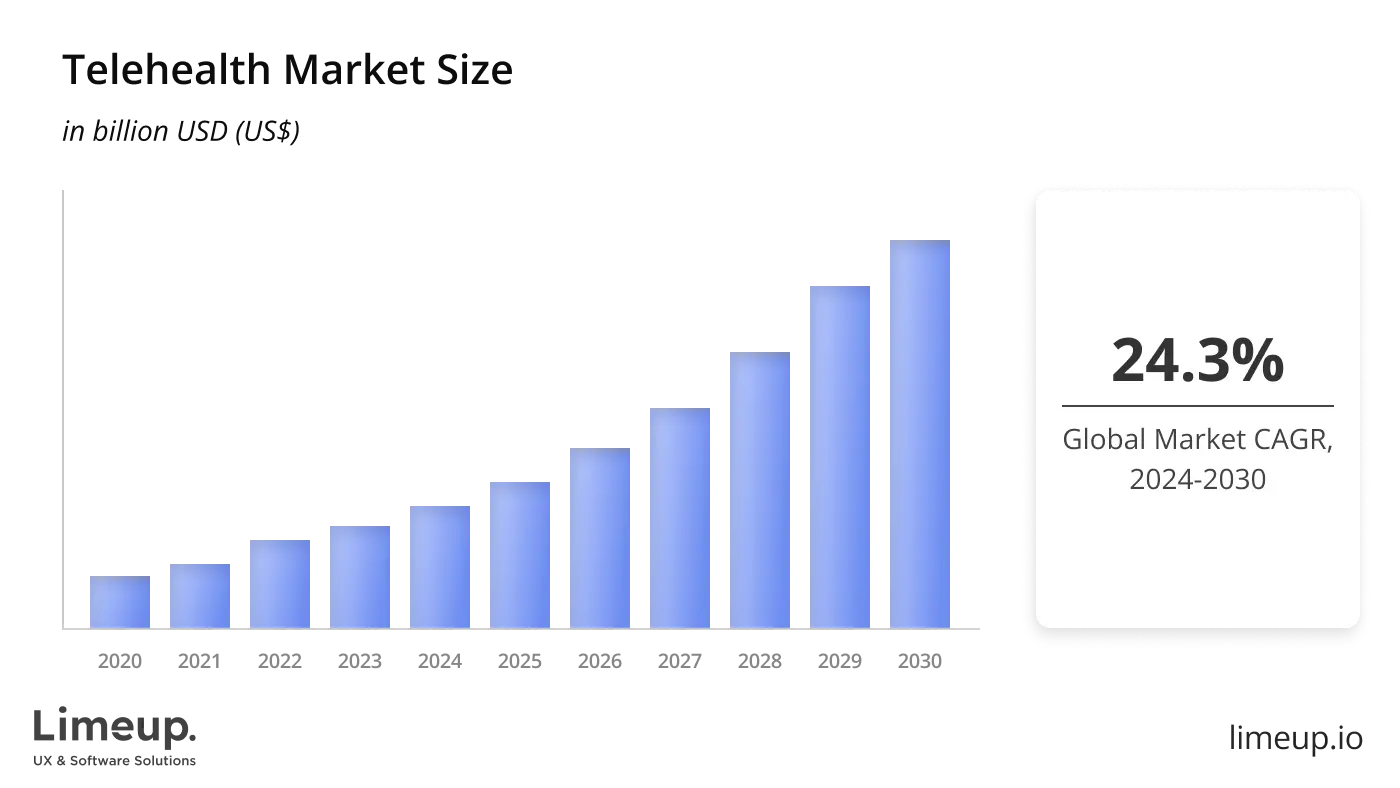
The best advice here is to talk with such a supplier to outline what you want to see in your application. Firms working within this field have an understanding of all the crucial concepts, offering you precise estimations of approximate project budgets.
But even though all the monetary trends are up to the squad you are working with, we want to deliver three main cost drivers of telehealth development services that can make everything more or less pricy:
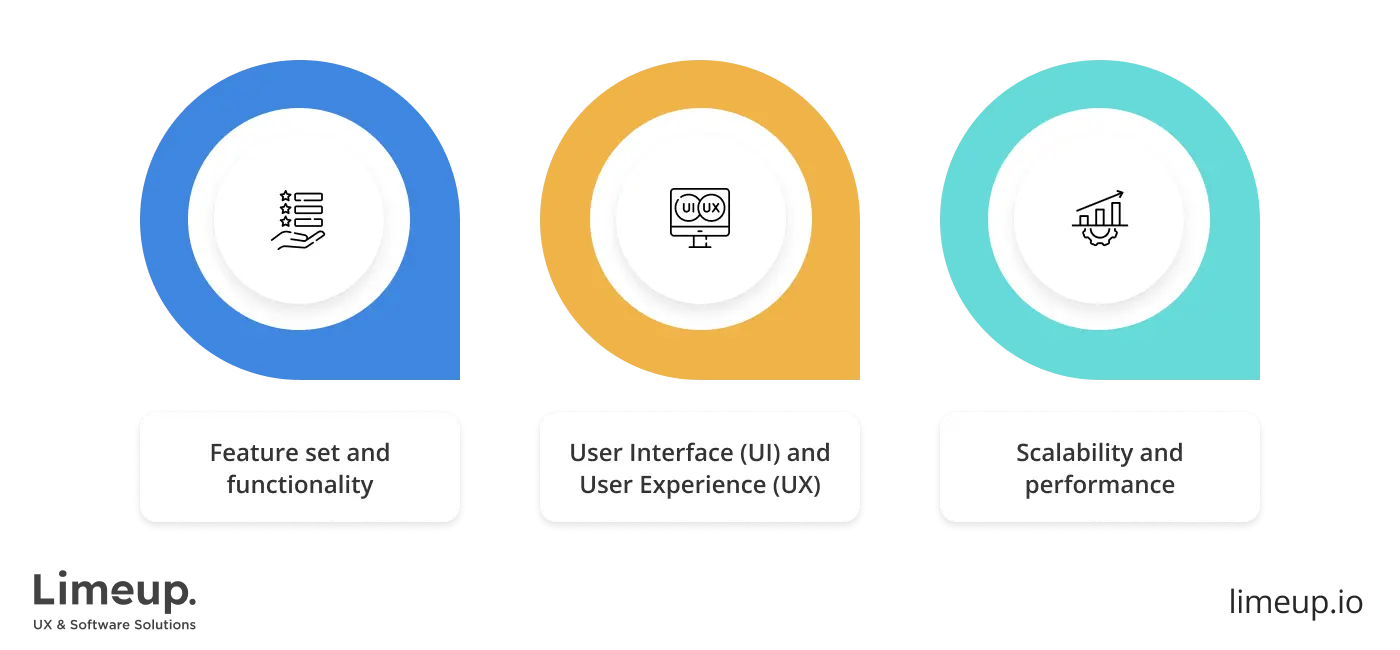
— Feature set and functionality.
The more sophisticated the feature, the steeper the software development cost, alas. For starters, basic video calling and appointment scheduling processes are surprisingly cheap, but everything might balloon to stratospheric levels once you add some AI tools, remote diagnostics and other interfaces with health-monitoring devices built into your program.
It’s like buying a car — a cheaper, entry-level model will take you from point A to point B, but the cost rises significantly as luxury options and high-tech enhancements are added. Indeed, while such capabilities add value, they also increase the investment needed in telehealth software development to purchase them.
— User Interface (UI) and User Experience (UX).
A great telemedicine application is built upon smooth, intuitive visuals — without such things, even the most advanced features will fall flat. Making this kind of work for older adults or anyone uncomfortable with gadgets is just like tailoring a suit — it requires precision, expertise and a deep understanding of the end users’ needs.
This usually requires involving specialized UI/UX experts and carrying out accessibility testing and iterative improvements, all of which raise the price to build telehealth software. But a well-designed interface is not just a luxury; rather, it is a prerequisite for engagement, usability and ultimately, success for the app in the long run.
— Scalability and performance.
Scaling a telemedicine software is a complicated process that requires planning for the present users and a design that will have no bottlenecks in case of a surge in demand for its services sometime in the future. Such a platform ought to permit an increasing number of users without compromising on performance or security for any healthcare provider or institution.
Achieving this is a daunting task and will require a great architecture and load balancing, while in many cases, the use of cloud-based infrastructure will come into play — something that compounds the price. These costs of telemedicine software development services may seem prohibitively expensive, yet they represent an investment in ensuring that everything will be sound, responsive and resistant to obsolescence.
Each of these adds to the final monetary rate, just like ingredients in a gourmet dish — each brings its complication and value to the recipe. From scalability to compliance, advanced features and user experience, every decision has an impact on not just price but also on how well your app performs with the increase in demand.
Conclusion
We hope this outline helps clear up any questions you may have about the subject. Our specialists explained what telemedicine software is, how to build it, what unique features to include and we’ve removed the veils on timelines and price tags. With this, we are certain you are clearer on what it takes to build a successful healthcare portal.
Yet, in case you happen to be considering joining hands with a trustworthy partner and telehealth development services provider to realize your vision, you’re right away at the most suitable place.
If you need the basic features or want to implement innovative features, a proper planning and creation strategy would keep your platform afloat in this fast-evolving healthcare landscape. Speak to our team today to discuss how Limeup can make the vision of your telemedicine come true with a tailor-made solution that is highly performant and meets your explicit needs.

